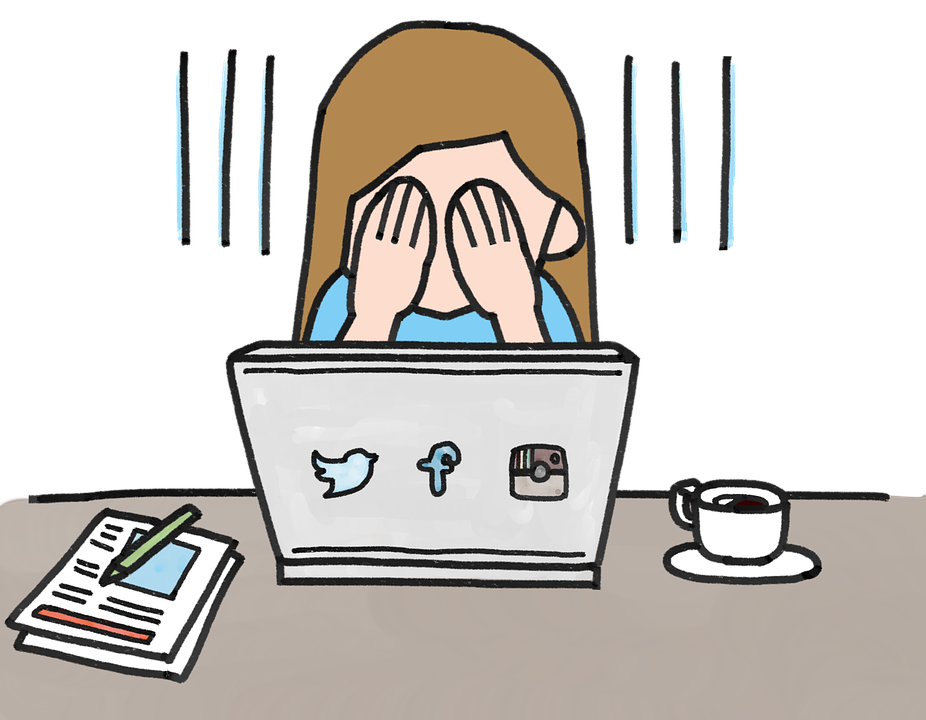Despite the seemingly inconsequential nature of information behind a screen, the ubiquity of social media allows it to seep into the reality of many adolescents. The culture of likes, comments, shares, and followers is widely known to seem superficial, but it has a very real connection with the mental health of developing minds. The ways in which many interact with these platforms — such as reacting to constant social feedback, developing new behaviors, and extending social anxieties — may be heavily reflected in the mental health of users or act as predictors for mental health treatment outcomes. With social media birthing a new era of atypical human interaction that blurs virtual and real-life connections, it is becoming especially important to observe its impact on the mind and brain to help explain, predict, and prevent the mental health problems exacerbated by it.
The culture of likes, comments, shares, and followers is widely known to seem superficial, but it has a very real connection with the mental health of developing minds.
Neural changes are significant markers of adolescent development and can help understand the ways in which social media is influencing emerging generations. However, social media’s effects on brain regions involved in socializing are largely unknown. A 2018 review of developmental sensitivities related to adolescents’ media use reveals how neuroscience may help understand the influence of media on their well-being and opinion formation. Brain studies in the review suggest adolescents are highly sensitive to acceptance and rejection through social media. Researchers have observed increased activity in the orbitofrontal cortex and insula after participants experienced exclusion, potentially signaling heightened arousal and negative mood. These brain regions are associated with functions such as processing conflict and negative emotions, which may help explain this correlation.
The dorsal anterior cingulate cortex (dACC) has similar functions, particularly connected to processing norm violations. Stronger activity in the dACC has been seen in adolescents and young adults with a history of social exclusion, maltreatment, or insecure attachment. By comparison, spending more time with friends has a reduced response in the dACC. Studying regions and pathways involved in protective factors from such negative effects of social media may inform healing for a generation heavily influenced by social exclusion, especially for exacerbating social anxiety, depression, or other mental health problems.
With the complexity of such mental health problems stretching beyond brain activity, it is also important to consider other factors involved in social media influence on adolescents. This is particularly significant in observing symptom change in mental health problems. A 2019 review of 13 studies examined the influence of social media on depression, anxiety, and psychological distress in adolescents. It found that prominent risk factors for these mental health problems included time spent on social media, activities such as repeatedly checking for messages, personal investment, and addictive or problematic use. Specific behaviors such as social comparison, active or passive use of social media, and motives for social media use may have a greater influence on the symptoms of depression, anxiety, and psychological distress than the frequency of social media use or quantity of online friends.
Patterns of how information is processed and the behaviors that follow may be more important than frequency of social media consumption.
There have also been recent studies on “phubbing.” The term is derived from the words “phone” and “snubbing,” referring to checking a smartphone during a real-life conversation and escaping from interpersonal communication. It has been seen to be correlated with forms of “FOMO,” or the fear of missing out, and is defined as “a pervasive apprehension that others might be having regarding experiences from which one is absent.” A study on neuroticism, “trait fear of missing out,” and phubbing revealed that two forms of FOMO and problematic Instagram use were highly correlated with phubbing. Retaining a trait fear that others find more reward online as well as fearing falling behind on social media updates can be indicators of potential future mental health impacts. Patterns of how information is processed and the behaviors that follow may be more important than frequency of social media consumption.
Though these studies only establish correlational, they point research in the direction of protecting adolescents against the negative influence of online rejection or against equipping them for a healthier relationship with social media feedback. Tracking specific behaviors, attitudes, and brain processes within adolescents can help predict the onset of symptoms of greater mental health problems, potentially curbing the harmful effects of social media or even social interaction as a whole.
Image source: Max Pixel






